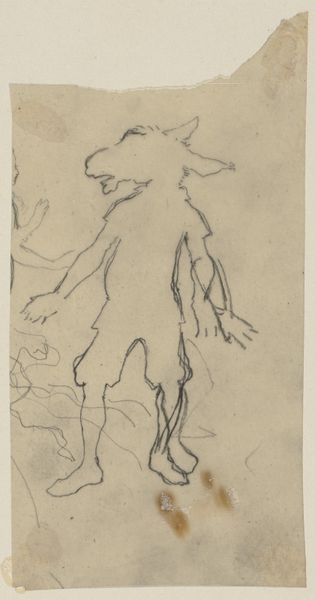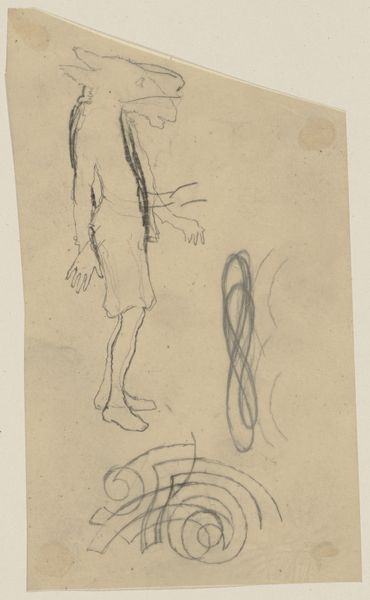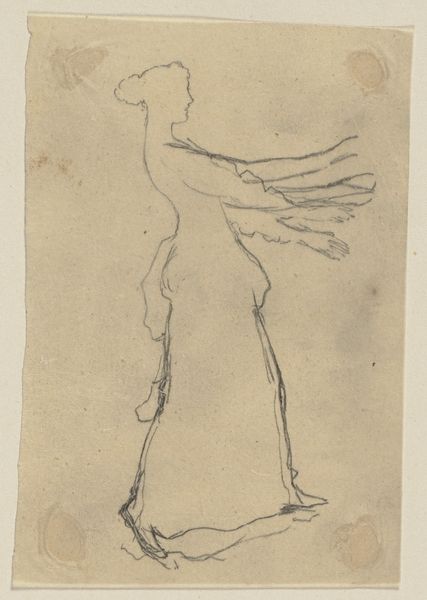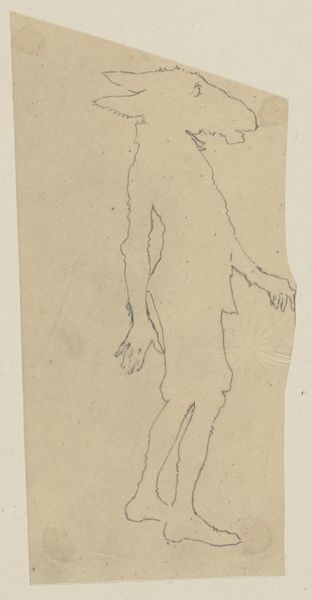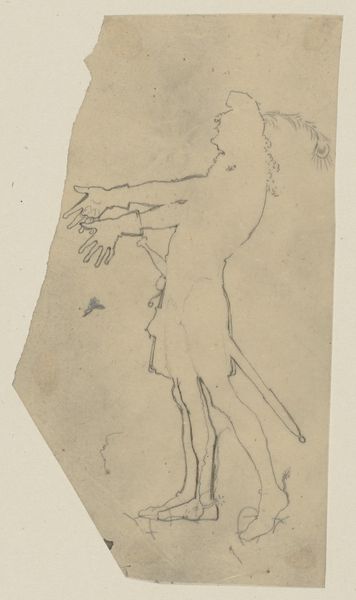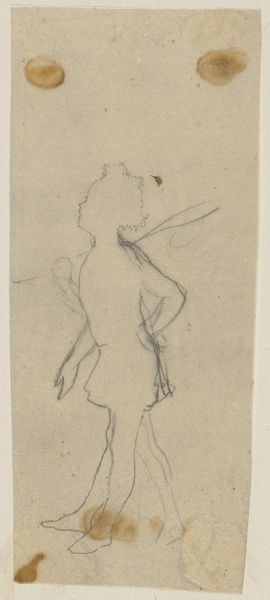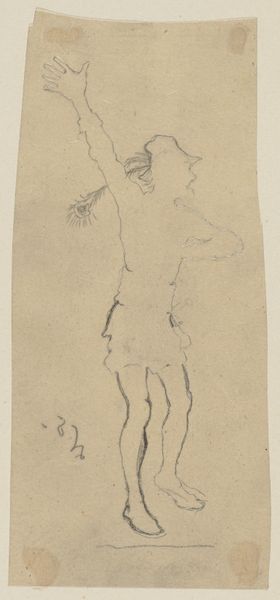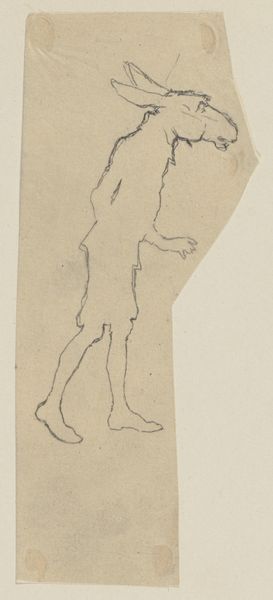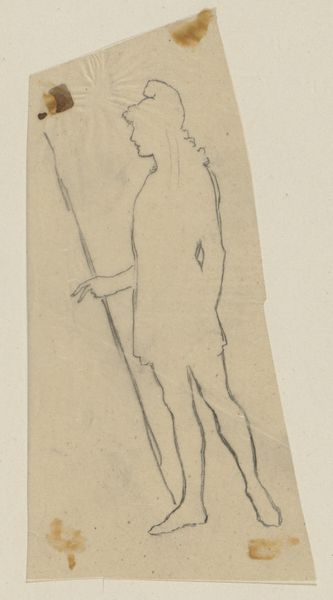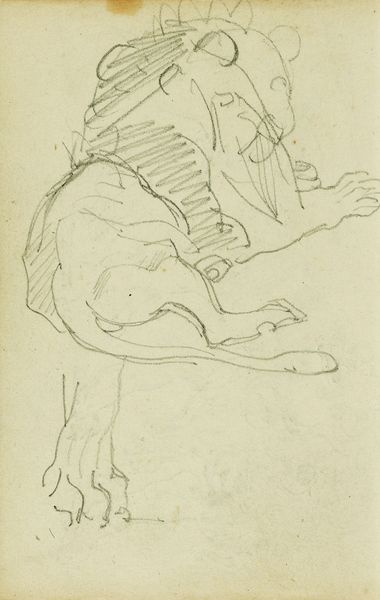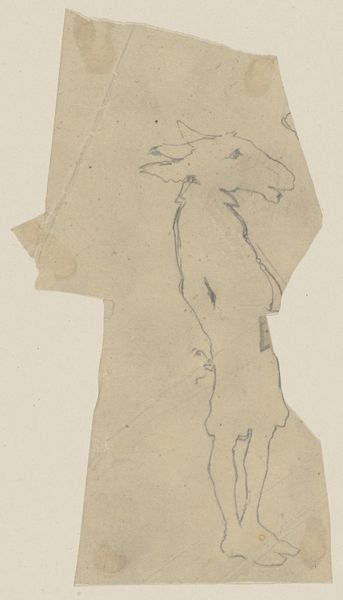
Copyright: Public Domain
Editor: This is Paul Konewka's drawing, "Nick Bottom mit Eselskopf, gehend," made around 1867-1868. The stark lines of the figure are quite striking and unsettling, particularly that donkey head. What layers do you see beneath this deceptively simple drawing? Curator: It's fascinating how Konewka uses such minimalist strokes to depict such a complex figure. For me, this isn't just a drawing of Bottom from "A Midsummer Night's Dream," but a commentary on the performative nature of identity itself. Consider how Bottom willingly embraces this transformation – doesn’t that speak to how we ourselves adopt and shed different roles within social constructs? Editor: That's an interesting point. I always viewed Bottom's transformation as more of a comical curse, not an active choice. Are you suggesting there's a power dynamic at play? Curator: Precisely. Who benefits from this transformation? Whose gaze defines it as comical or monstrous? Shakespeare's play and Konewka's drawing reflect anxieties about class, performance, and the very nature of being. By highlighting Bottom’s willingness, aren’t we also confronting the ways marginalized groups are often compelled to perform for dominant cultures? Editor: That definitely shifts my understanding. So, it’s not just about the individual, but about the systems that encourage this sort of transformation... Curator: Absolutely! Romanticism, with its emphasis on individual expression, often ignored these broader social structures. Konewka’s drawing prompts us to examine the intersections of art, power, and representation, particularly in a time when ideas about identity were undergoing significant shifts. What is freedom without equality? Editor: I hadn’t considered that, but viewing it as a commentary on performance makes the drawing far more compelling and resonant with contemporary concerns. Curator: Indeed. By questioning these established narratives, we create room for a deeper understanding of the art and the times.
Comments
No comments
Be the first to comment and join the conversation on the ultimate creative platform.
